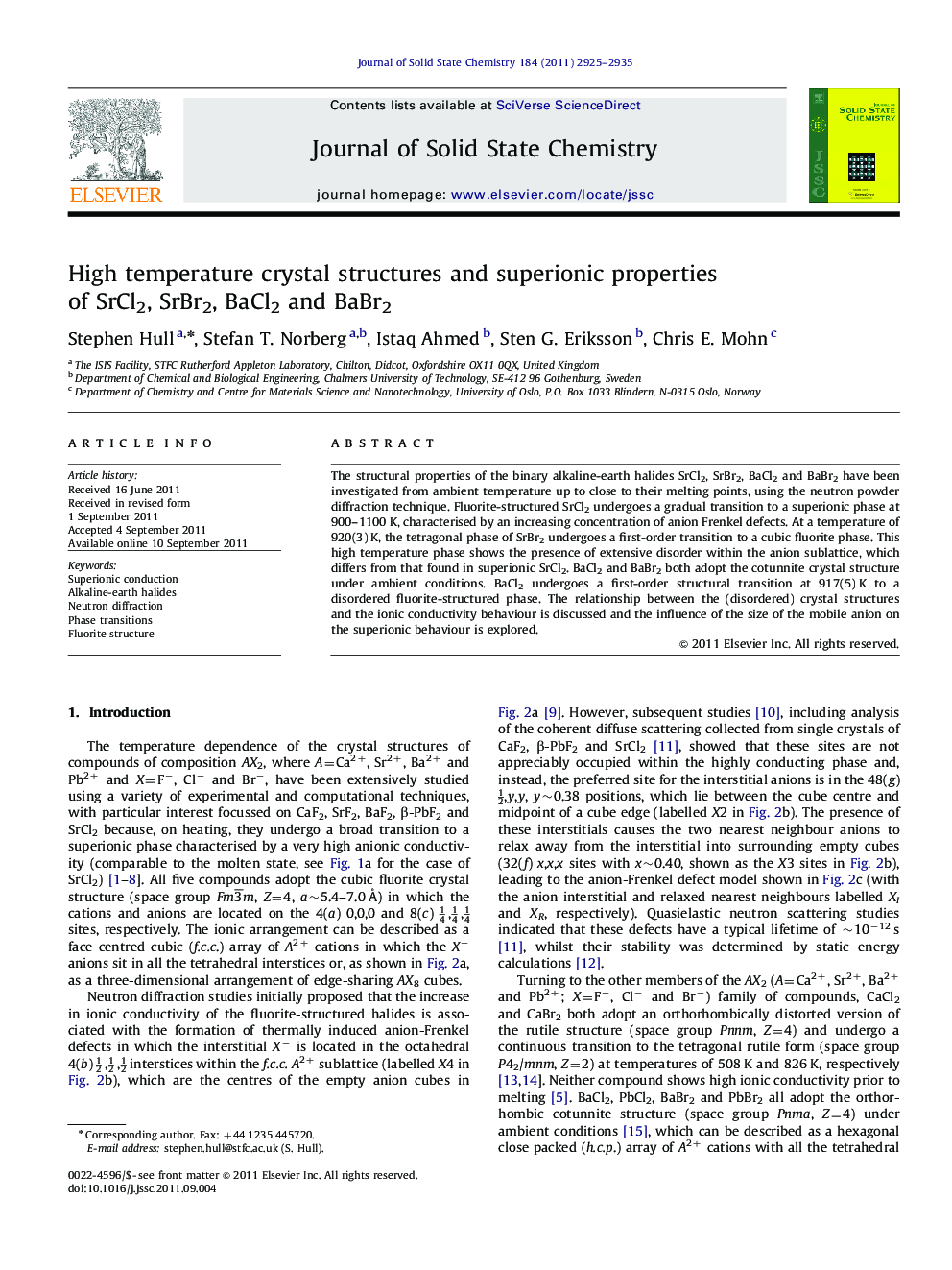| Article ID | Journal | Published Year | Pages | File Type |
|---|---|---|---|---|
| 1332063 | Journal of Solid State Chemistry | 2011 | 11 Pages |
The structural properties of the binary alkaline-earth halides SrCl2, SrBr2, BaCl2 and BaBr2 have been investigated from ambient temperature up to close to their melting points, using the neutron powder diffraction technique. Fluorite-structured SrCl2 undergoes a gradual transition to a superionic phase at 900–1100 K, characterised by an increasing concentration of anion Frenkel defects. At a temperature of 920(3) K, the tetragonal phase of SrBr2 undergoes a first-order transition to a cubic fluorite phase. This high temperature phase shows the presence of extensive disorder within the anion sublattice, which differs from that found in superionic SrCl2. BaCl2 and BaBr2 both adopt the cotunnite crystal structure under ambient conditions. BaCl2 undergoes a first-order structural transition at 917(5) K to a disordered fluorite-structured phase. The relationship between the (disordered) crystal structures and the ionic conductivity behaviour is discussed and the influence of the size of the mobile anion on the superionic behaviour is explored.
Graphical abstractAnomalous behaviour of the lattice expansion of SrCl2 at temperatures of ∼1000 K is associated with the gradual transition to a superionic phase, whilst SrBr2 undergoes a first-order structural transition (β→α) to a fluorite-structured superionic phase at 920(3) K.Figure optionsDownload full-size imageDownload as PowerPoint slideHighlights► Anomalous behaviour of the lattice expansion of SrCl2 occurs at temperatures ∼1000 K. ► Crystal structure of β-SrBr2 is described in detail. ► On heating, SrBr2 and BaCl2 transform to a fluorite-structured superionic phase. ► Temperature dependence of the BaCl2 and BaBr2 structures is presented. ► Nature of the superionic phases within the alkaline-earth halides is discussed.
